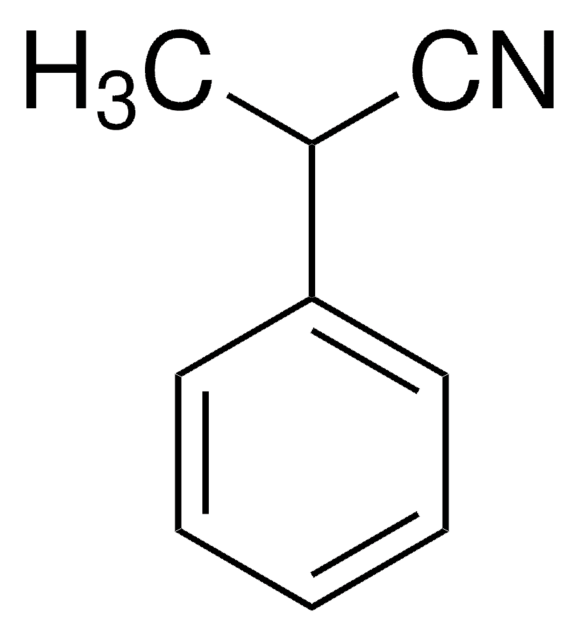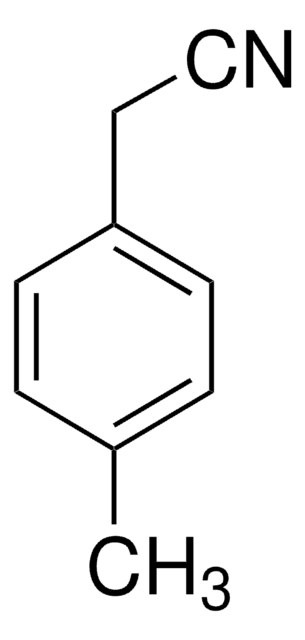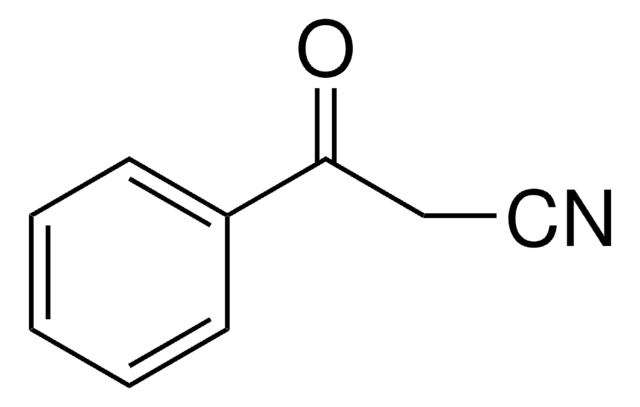171573
3-Phenylpropionitrile
99%
Sinónimos:
Hydrocinnamonitrile
About This Item
Productos recomendados
assay
99%
form
liquid
refractive index
n20/D 1.521 (lit.)
bp
113 °C/9 mmHg (lit.)
mp
−2-−1 °C (lit.)
density
1.001 g/mL at 25 °C (lit.)
SMILES string
N#CCCc1ccccc1
InChI
1S/C9H9N/c10-8-4-7-9-5-2-1-3-6-9/h1-3,5-6H,4,7H2
InChI key
ACRWYXSKEHUQDB-UHFFFAOYSA-N
¿Está buscando productos similares? Visita Guía de comparación de productos
Categorías relacionadas
General description
Application
signalword
Danger
hcodes
Hazard Classifications
Acute Tox. 3 Oral
Storage Class
6.1C - Combustible acute toxic Cat.3 / toxic compounds or compounds which causing chronic effects
wgk_germany
WGK 3
flash_point_f
230.0 °F - closed cup
flash_point_c
110 °C - closed cup
ppe
Eyeshields, Faceshields, Gloves, type ABEK (EN14387) respirator filter
Certificados de análisis (COA)
Busque Certificados de análisis (COA) introduciendo el número de lote del producto. Los números de lote se encuentran en la etiqueta del producto después de las palabras «Lot» o «Batch»
¿Ya tiene este producto?
Encuentre la documentación para los productos que ha comprado recientemente en la Biblioteca de documentos.
Los clientes también vieron
Nuestro equipo de científicos tiene experiencia en todas las áreas de investigación: Ciencias de la vida, Ciencia de los materiales, Síntesis química, Cromatografía, Analítica y muchas otras.
Póngase en contacto con el Servicio técnico












